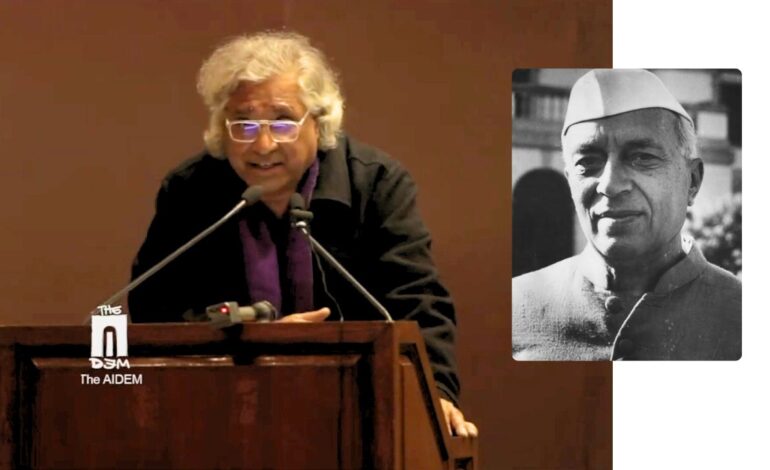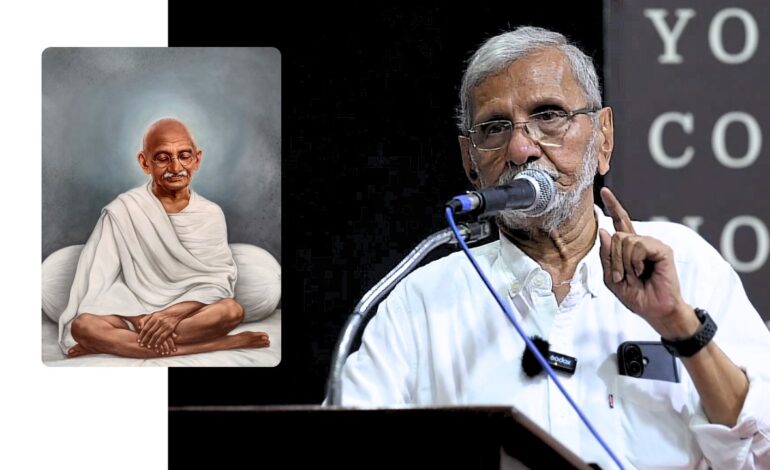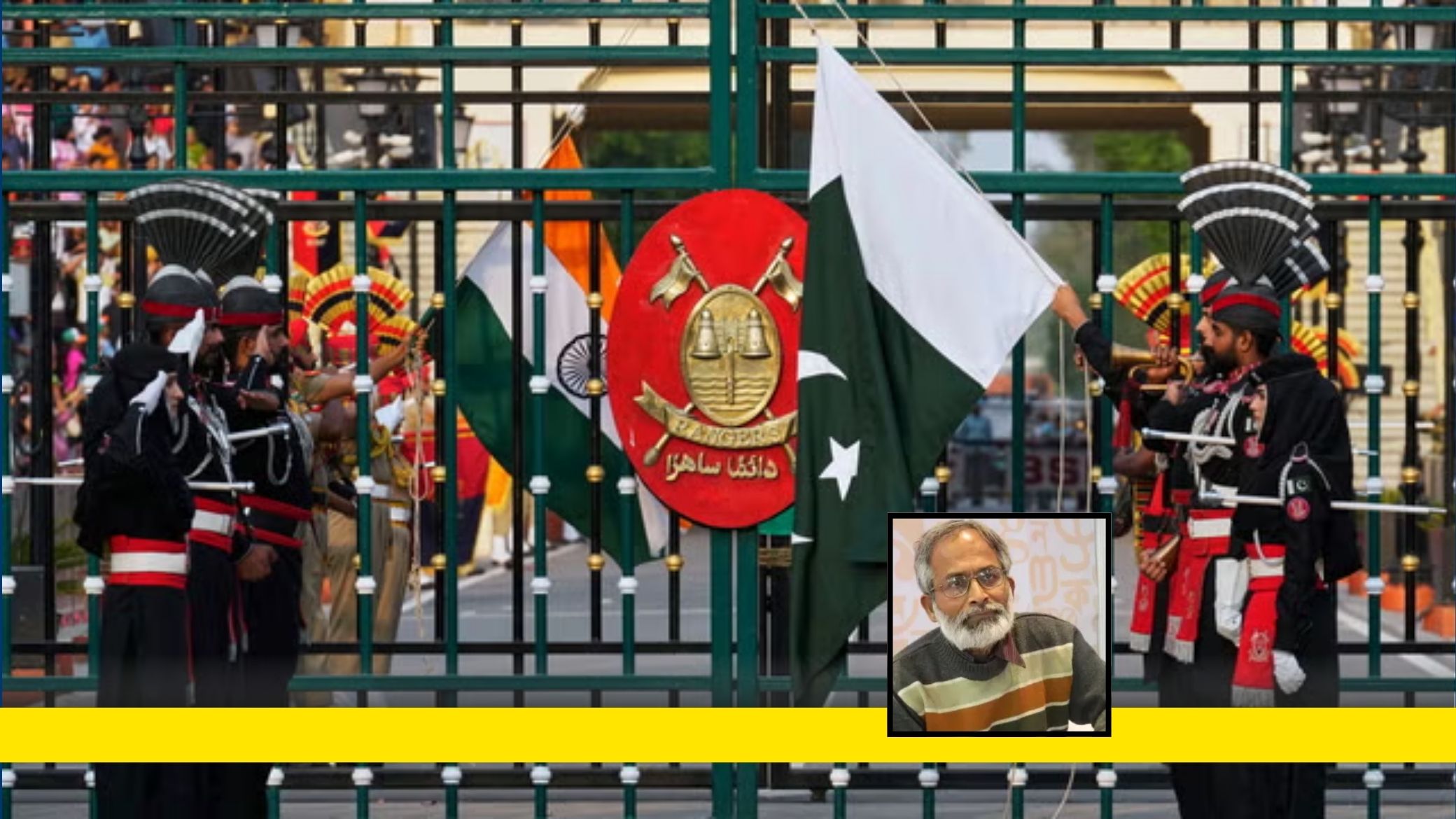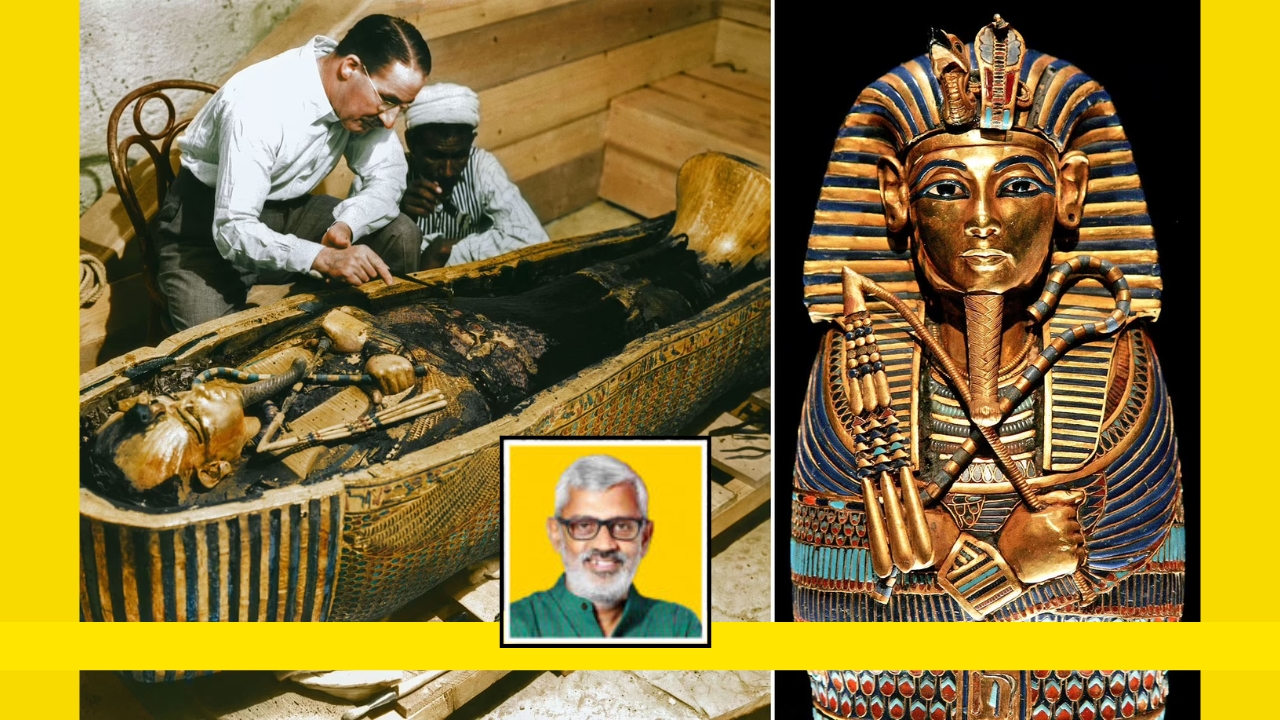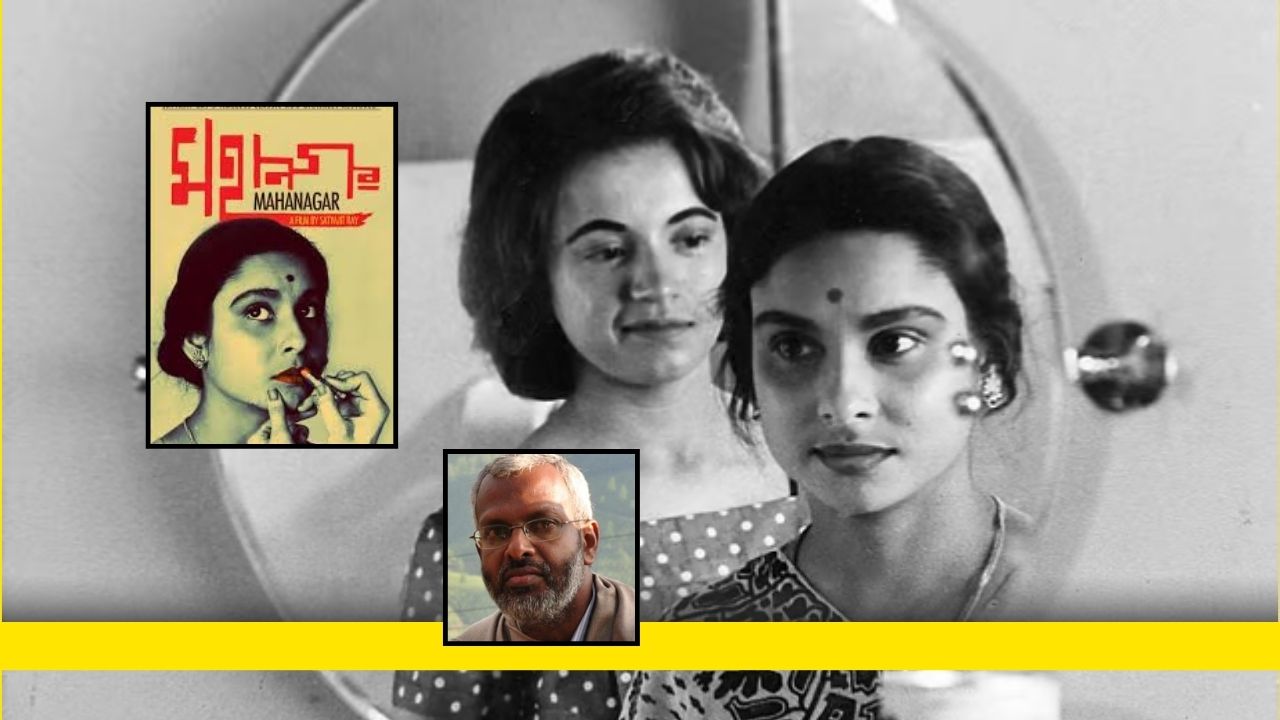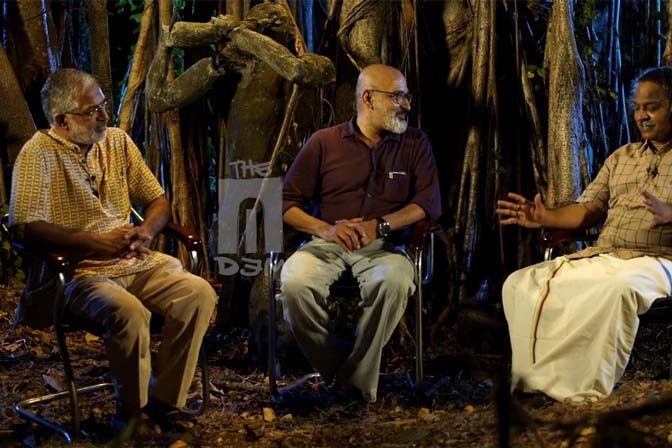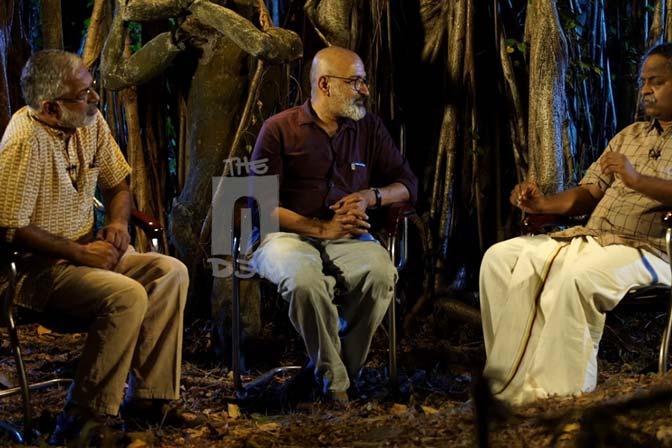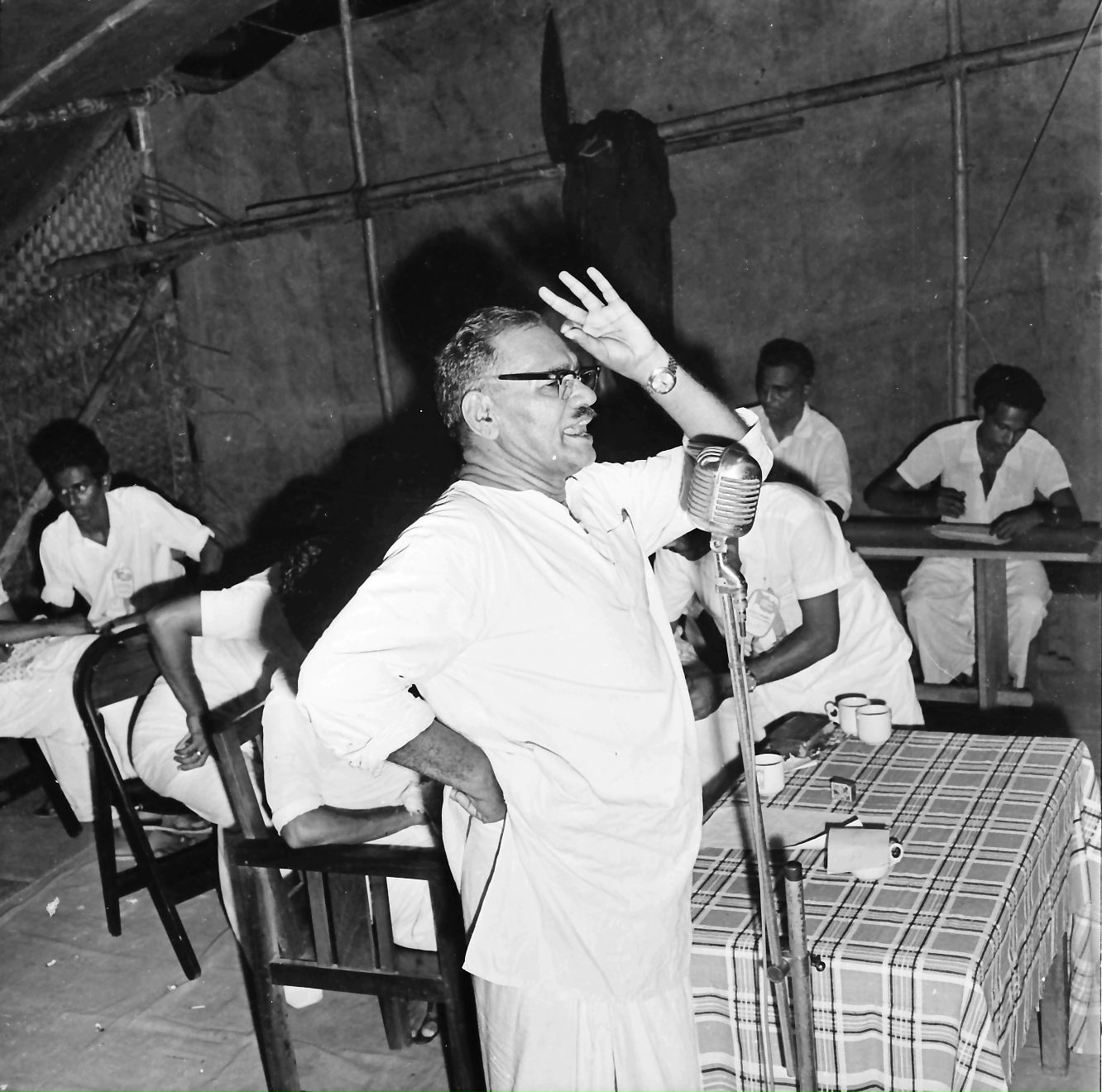Sant Raidas’ Relevance in 21st Century India
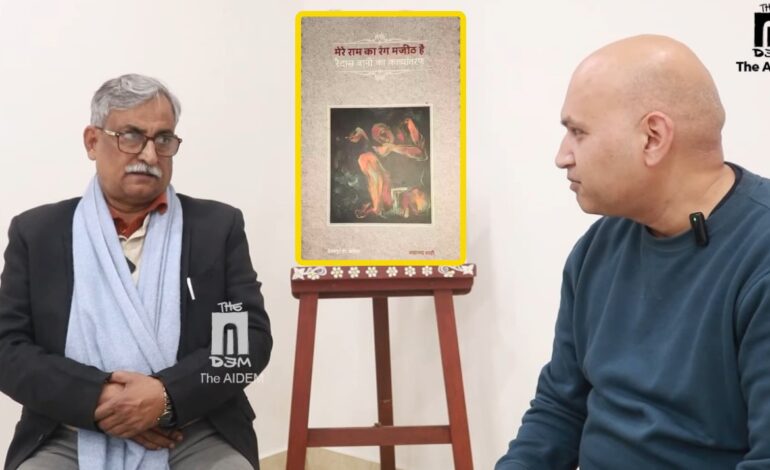
This discussion is part of a series named Book Baithak, a collaboration between The AIDEM and Ka The Art Cafe, Varanasi, which focuses on discussing books and authors relevant to contemporary India.
Sant Raidas, also known as Sant Ravidas, was a 15th-century saint, poet, and social reformer who played a pivotal role in the Bhakti movement in North India. His teachings on equality, universal brotherhood, and social justice have become more important in 21st-century India. His hymns are included in the Guru Granth Sahib, the holy scripture of Sikhism, and he is a central figure in the Ravidassia religious movement.
Sadanand Shahi, a poet, has translated the poetry of Sant Raidas into modern Hindi in his book “Mere Raam Ka Rang Majeeth Hai”. Shahi’s work preserves the spiritual and philosophical depth of Raidas’ poetry and brings it to life for a new generation.
Gaurav Tiwari: In today’s second meeting of the book club, we are discussing Sadanand Shahi’s book “Mere Ram Ka Rang Majith Hai.” This book includes poetic translations of Saint Raidas’s hymns. In your book, the name “Raidas” is used, but on the Wikipedia page, he is referred to as “Ravidas.” Why is there a difference in the names?
Sadanand Shahi: Raidas is his original name, primarily used in the eastern part of Banaras where he lived. In old texts from this region, Raidas is used. His influence spread westward, to Rajasthan and Punjab, where sources use the name Ravidas. The oldest text form of his name is found as Ravidas in Guru Granth Sahib. To honor him as a guru, a more formal Sanskritized name, Ravidas, was used. Raidas lived during the 14th -15th centuries, the same time as Kabir. It’s remarkable that these two poets, two saint-poets, lived in Banaras at the same time, addressing similar audiences. Many poems translated poetically include mentions of each other by Raidas and Kabir. They had the same ideological flow. The difference is that Kabir’s words have a fiery energy, a challenge, as seen in “जो तू बाभन बाबनी जाया आन बाट काहे नहीं आया।(If you were truly born a Brahmin, why didn’t you come by a different path)” However, Raidas speaks in a humble and simple language, never aggressive. Their firmness and message are the same, but the expression differs. My friend Peter Friedlander, who translated Raidas’s work into English, humorously explains that Kabir was born in Vaishakh (hot season) and Raidas in Magh (cold season). Hence, Kabir’s language has the heat of Vaishakh, and Raidas’s has the coolness of Magh.
Gaurav Tiwari: Was Saint Raidas famous in his time? Did he have the same number of followers, or did this number increase in later years? And what geopolitical did he cover?
Sadanand Shahi: Both Raidas and Kabir lived around the same time and one special thing about saints is that they constantly traveled. I believe that this tendency for travel among saints is somehow related to Buddha’s travels and teachings. This is my assumption, I haven’t done any concrete work on it. But if you look, Raidas traveled to Rajasthan, and there was a queen named Jhalli Rani who became his disciple and invited him. So, Raidas went to Chittor.
When you look at Raidas’s vocabulary, you see he was born in Banaras, and the structure of the common language is Braj, which was the poetic language of that time. But in Raidas’s works, you’ll find many Persian words. This is a result of his travels. There is also mention of him going to Gujarat. So, his influence extended to the West.

Gaurav Tiwari: We see that during the Ravidas Jayanti celebration in Banaras, many followers come from Punjab. Was this influence contemporary, or did it grow later?
Sadanand Shahi: The inclusion in Guru Granth Sahib happened in the 16th and 17th centuries. The reason you see so many people coming now is that a Ravidas Sikh tradition developed. Within Sikhism, a unique identity question emerged, leading to the creation of a parallel religion.
They created a book of Raidas’s hymns modeled after the Guru Granth Sahib, which is crucial in Sikhism. They formed a community and, interestingly, these people are quite prosperous and spread worldwide. So, they come not only from Punjab but also from other parts of the country and abroad. Marginalized and Dalit communities feel connected to Raidas.
Gaurav Tiwari: What is the essence of the philosophy behind the tradition developing around Saint Raidas?
Sadanand Shahi: The caste system in our society has caused many problems in the social structure. It is the source of inequality. Raidas does not challenge the caste system as directly as Kabir did, but he repeatedly emphasizes his caste and says that even though his caste is what it is, true spirituality is within him.
Gaurav Tiwari: In his poems, he often adds at the end, “रैदास चमार यह बात कह रहा है (Raidas, the Chamar, is saying this),” but we don’t see Kabir saying, “कबीर जुलाहा यह बात कह रहा है(Kabir, the weaver, is saying this)” This is present in many of his poems, “रैदास चमार यह बात कह रहा है(Raidas, the Chamar, is saying this)”
Sadanand Shahi: Kabir also says it sometimes, like “जात जुलाहा मति का धी(A weaver by caste, foolish in intellect)” I mean, there are a few couplets, but not many. However, Raidas consistently says, “कह रैदास खलास चमारा(Raidas, the liberated Chamar, says this)” He also said, “हम तो वाराणसी के आसपास जन्मे, हम लोग ढोर ढोते हैं।(We were born around Varanasi, and we haul dead cattle’s bodies)” It’s well-known that a specific caste uses dead animals, which is the caste that hauls cattle. But because of our true love for God, whom God has accepted, the whole world respects us. He also wrote, “ब्राह्मण हमारे आगे दंडवत करते हैं। (“Brahmins bow before me)”
Gaurav Tiwari: When we read about Saint Raidas, how are his teachings different or special compared to other Bhakti saint poets?
Sadanand Shahi: In the tradition of Nirgun saints, which we consider Kabir as the main figure in Hindi, Kabir and Raidas were contemporaries. The most special thing about Raidas’s poetry is that it advocates for the working saint. This also challenges the caste system because the caste system assigned jobs based on caste. Not only jobs, but also determined their social order. But Raidas says that we can worship God even while stitching shoes. And the love we have for Him is possible.
Raidas continuously worked on stitching shoes. The idea of a working saint means that we can achieve mental superiority while doing daily tasks. Different professions have had saints—there have been cotton carders, butchers, and barbers. The problem is, if they leave their profession, they would face livelihood issues.
Raidas used to stitch shoes, and if a saint-like person came, he would give shoes for free. His father Raghu thought this was a problem and would ruin the shop, so he separated him. Raidas set up a hut behind the house and started working there. Stories tell that God thought my devotee is stitching shoes, so He visited Raidas in the guise of a Brahmin and gave him a philosopher’s stone. Raidas asked what it was for, and God said it turns iron into gold. Raidas said he didn’t need it, but if you want to give it, you can leave it there. A year later, God thought Raidas must now have a house of gold, so He went to see. He saw Raidas still stitching shoes in the hut. God asked what he did with the philosopher’s stone, and Raidas said it was still where it was left. He then applied his sweat on a tool, turning it into gold and then threw the tool into a well.
These stories show that Raidas meant to say that nothing is greater than human labor to turn iron into gold. In our social and religious structure, labor is considered inferior, but Raidas gave great importance to the dignity of labor.
Gaurav Tiwari: Kabir’s spiritual knowledge is believed to have begun when he became a disciple of Ramanand. What can be said about Saint Raidas in this context?
Sadanand Shahi: In the context of Saint Raidas, there is no mention of such a beginning. It means that his spiritual journey is self-discovered. One thing that raises suspicion is that both poets, whether Kabir or Raidas, have written a lot about the greatness of the guru. But neither Kabir nor Raidas has mentioned Ramanand as their guru. And it’s not that they don’t mention anyone in their poetry; they mention Namdev and each other. But they don’t mention their guru, yet they praise the guru’s greatness. This raises doubt. And then, to include them in the dominant tradition, Ramanand was declared their guru.
Gaurav Tiwari: People are going to take a dip in the Kumbh Mela. On TV, many spiritual leaders, some from IIT, are being shown, who are attaining spirituality. In this context, the life of Saint Raidas is very inspiring for those who want to undertake a spiritual journey.
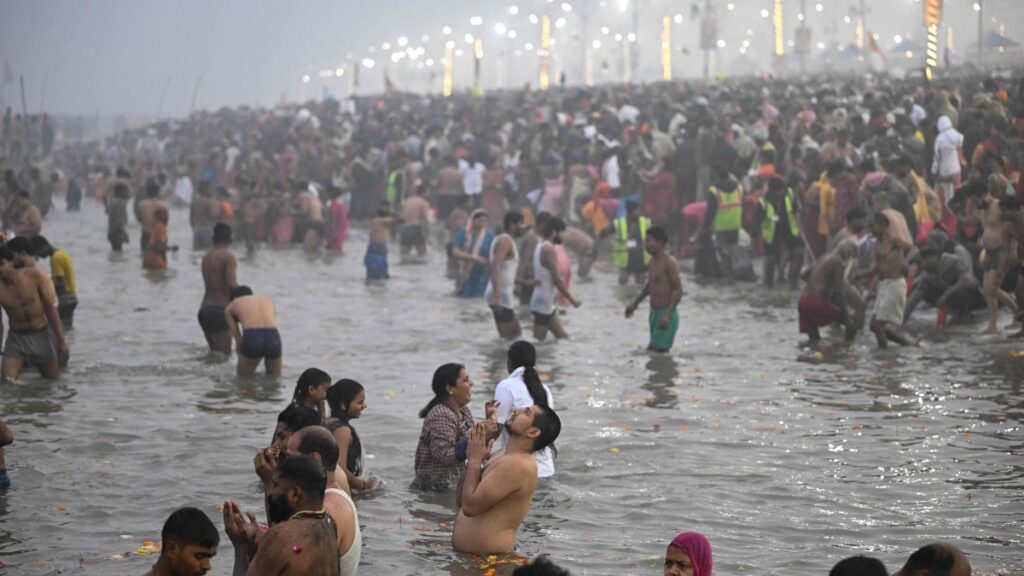
Sadanand Shahi: It is very inspiring. He says that there is no need to go anywhere, “मन चंगा तो कठौती में गंगा।” Kabir also says, “मन न रंगाए, रंगाए जोगी कपड़ा (The inner-self is not dyed, but the yogi dyes his robe)।” This means that by changing clothes and appearance, one does not become a true saint or devotee. Kabir says, “मन का मनका फेर। जो मन है उसको बदल।(Instead of following rituals blindly, Change the inner-self itself)” If the mind is not changing, then no matter where you go, nothing will change.
This is a small excerpt from Raidas’s poetry, written in today’s language:
“जो हरि का नाम जपता है उसके समान ना विष्णु है, ना ही शिव और ना कोई अन्य।
वह एक ही अनेक रूपों में विस्तारित है।
उसे ले आओ भाई, वही भरपूर है, वही पूर्ण है।
भगवत भक्ति के सिवा कुछ नहीं है।
जिसके घर वह अछूत छिपा, नामदेव भी हरि का नाम जपने से मान्य संत हो गया |
व्यास के लिखे और सनक के बनाए ग्रंथों को देखिए।
नाम की महिमा सातों दीपों में है।
जिसके कुल में ईद बकरीद पर गोवध होता हो, जो शेख शहीद और पीरों को मानने वाला हो, जिसका बाप यह सब करने वाला हो, उस कुल का पुत्र कबीर ने ऐसा किया कि तीनों लोकों में प्रसिद्ध संत हो गया।
जिसके कुटुंब के चमार आज भी बनारस के आसपास ढोर ढोते हैं।
तुम्हारे दासों के दास रैदास का आचारवान ब्राह्मण विधि सहित करते हैं दंडवत।”
(Translation: Among those who chant Hari’s name, there is none equal to Vishnu, Shiva, or any other.
He is the one who expands into many forms.
Bring him, brother, for he is full and complete.
There is nothing but devotion to God.
Even in the house of an untouchable Chhipa, Namdev was accepted as a saint by chanting Hari’s name.
Look at the scriptures written by Vyasa and created by Sanak.
The glory of the name is in all seven continents.
Even in the family where cow slaughter happens on Eid Bakrid, those who follow Sheikhs and Pirs, whose father does all this, the son of such a family, Kabir, became a famous saint in all three worlds.
Whose family of cobblers still hauls dead cattle’s bodies around Varanasi. The virtuous Brahmins bow respectfully before Raidas, the servant of your servants.)
Gaurav Tiwari: Just like Rabindranath Tagore translated 100 poems of Kabir into English, you have done the same for Raidas. Tell us about your book where you have translated his poetry.
Sadanand Shahi: Poetry translation means that it is still poetry, and Raidas’s poetry is in Hindi. But there is a significant gap between that language and today’s language. What language is it? Braj language. Braj is not a local language because he traveled a lot, so it also includes Persian words.
The idea behind the translation was to make Raidas accessible to today’s Hindi readers. The literary quality and thoughts of Raidas should reach today’s readers. I also have the idea to translate 100 poems of Raidas. This book contains 40 verses, including only those found in Guru Granth Sahib.
There’s a train called Begumpur Express. Once, when I was traveling on it, someone sitting next to me asked where Begumpur is. Geographically, there’s no Begumpur. Initially, I laughed, then I explained that Begumpur is in Raidas’s poetry, and it’s a concept, a utopia.
Read that verse, in it Raidas dreams of an alternative society. What does a poet do? A poet wants to create a beautiful world in contrast to the current inconsistencies, inequality, oppression, injustice, dishonesty, lies, and deceit. How does he create this beautiful world? He has tools, words. He uses words to do it.
Then I will explain why this is needed today, and maybe if I read it out, there won’t be any need to explain further. Here’s the translation:
“मेरा शहर बेगमपुर, यहां न दुख है, न दुख की चिंता, न माल है, न लगान की फिक्र।
ना खौफ है, ना खता, ना गिरने का भय।
मुझे मिल गया है ऐसा खूबसूरत वतन, जहां खैरियत ही खैरियत है।
मजबूत और मुकम्मल है यहां की बादशाहत, यहां न कोई दोयम है, न तेयम।
सब अव्वल है, यहां एक ऐसे शहर की कल्पना करते हैं, जिसमें सब अव्वल हैं, सब बराबर हैं।
आबो-दाना के लिए मशहूर यह शहर, अटा पड़ा है दौलत-मंदों से।
जहां भी जाएं, कोई रोक-टोक नहीं है।
सभी बंधनों से मुक्त।
रैदास चमार कहता है, जो इस शहर में रहने वाला है, वही मेरा मित्र है।”
(Translation:
My city Begumpur, where there is no sorrow, no worry about sorrow, no wealth, no concern for taxes.
No fear, no fault, no fear of falling.
I have found such a beautiful homeland where there is only well-being.
The rule here is strong and complete, here no one is second or third.
Everyone is the best, here we imagine a city where everyone is equal and the best.
This city, famous for its abundance, is full of wealthy people.
There is no restriction on where one can go.
Free from all bonds. Raidas, the Chamar, says, whoever lives in this city is my friend.
Raidas talks about a society where everyone is the best and equal. There are no second class citizens. This points towards the caste system, which has four levels. He describes a utopian city – Begumpur, where there is no fear and no restriction. People can go anywhere. The law and order are perfectly maintained. Everyone is equal and gets equal justice.)
Raidas talks about a society where everyone is the best and equal. There are no second class citizens. This points towards the caste system, which has four levels. He describes a utopian city – Begumpur, where there is no fear and no restriction. People can go anywhere. The law and order are perfectly maintained. Everyone is equal and gets equal justice.

Gaurav Tiwari: Final question. Saint Raidas wrote about 14th-century India and gave a vision of an alternative city. Now, 600 years later, what is its relevance?
Sadanand Shahi: If you read it carefully, you’ll realize that in three days, we will remember the Constitution and its core values. There’s a discussion that it is influenced by Western ideas. Liberty, equality, fraternity, and secularism are said to come from the French Revolution.
But read Raidas. The society he imagines, the map of Begumpur he creates, includes freedom. There are no restrictions on movement. People can go anywhere. Everyone is the best. Those living in the city share a sense of friendship.
Another interesting point is during the Constituent Assembly, the idea of Ramrajya (Rama’s kingdom) was frequently discussed. A poet born 100 years after Raidas, who spent a long time in Banaras, imagined Ramrajya. I think Raidas’s Begumpur and the concept of Ramrajya have many similarities.
The poet I’m talking about is Goswami Tulsidas. Tulsidas differs on one point, excluding the caste question. Otherwise, the story is the same. Tulsidas writes that everyone follows their caste duties, reintroducing the caste concept. In Hindi, there’s much debate about the Ramrajya concept, but its root is Raidas’s poem ‘Begumpur.’
Our Constitution is not read properly. The question of it being Western-influenced is raised repeatedly. But the core ideas of liberty, equality, and fraternity come from Bhakti poetry. Raidas was the first proponent. Kabir also says, “अवधू बेगम देश हमारा। (O ascetic, Begampur is our land)”
Reading it today is necessary because if we want to build a better society, we must understand that the core values of our Constitution come from our saint tradition. You can trace the Begumpur concept further back, even finding it in Gorakhnath’s works.
Reading Bhakti poetry is essential. Reading the poems of saints is essential. Whether we blame modernity or globalization, the reality is today’s world is divided. We can’t define ourselves without the other. Our definition and identity are not forming.
We create another enemy and define ourselves in comparison. This leads to jealousy, hatred, and diminishing human qualities. The sense of unity is being replaced by the sense of difference. But unity is needed.
Saints’ poetry, Kabir’s poetry, and Raidas’s poetry carry that essence. Therefore, reading it today is more necessary than ever.


